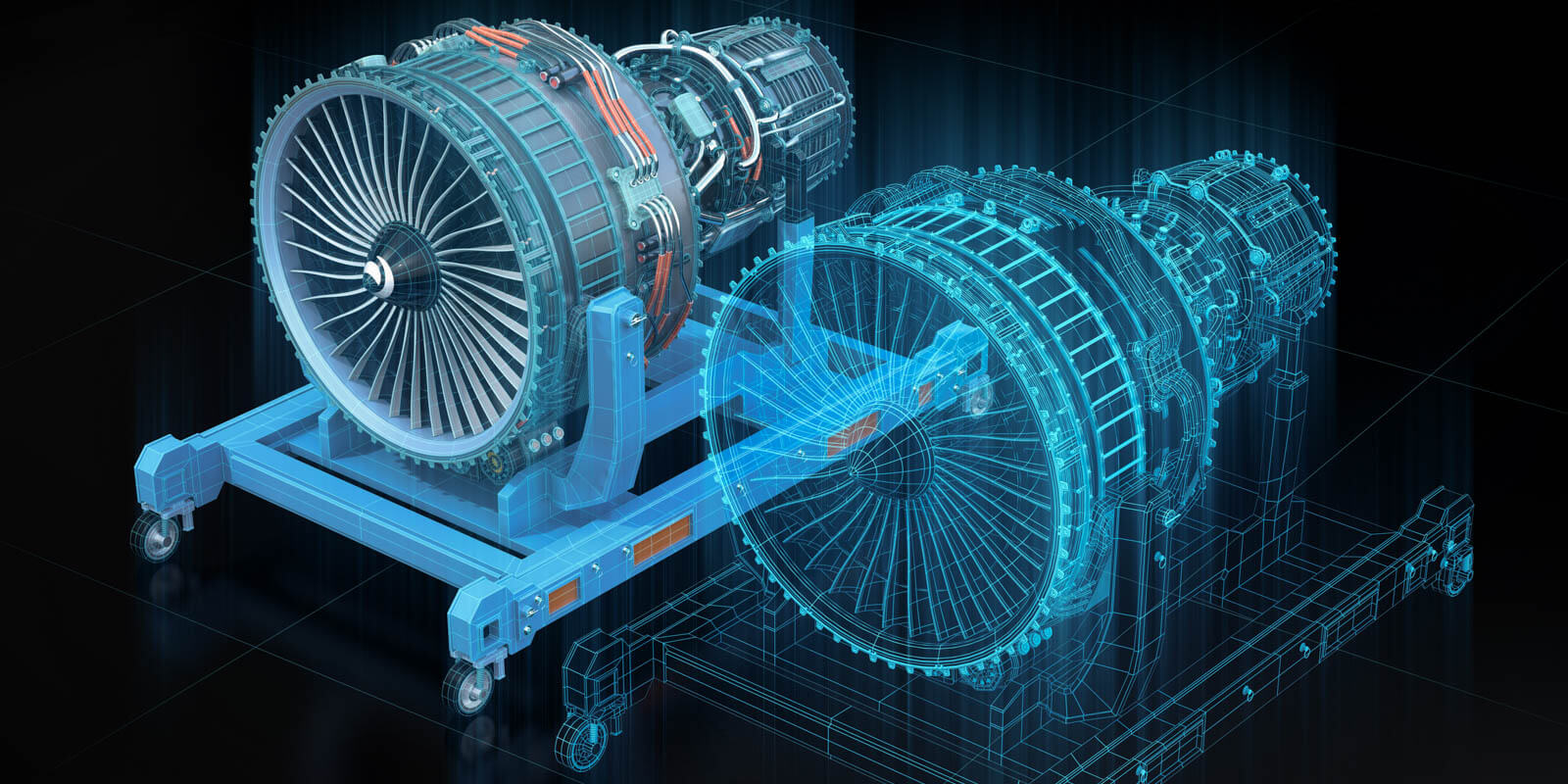TECHNOLOGY
Why Businesses Should Use Digital Twins

Businesses can test, monitor and validate a product before launch with the help of digital twin technology.

Digital twin enables engineers to identify any process failures before the product goes into production.
Business leaders can develop digital twins that help blur the line between the virtual world and the physical one to offer better products and to enhance customer experience.
Delivering a satisfying customer experience is one of the top priorities for every business. For this purpose, businesses carefully analyze customer journeys and market trends. In the digital era, customer journeys have become even more complex. Right from finding out about a new brand online or through friends and family to posting product reviews on social media, customer journeys can go through multiple stages. Additionally, changing market trends can influence customer experience drastically. Hence, business leaders have to develop complex strategies to enhance customer experience.

Organizations can develop digital twins to help enhance customer experience. A digital twin is a virtual replica of a product, system, process, or customer that helps businesses visualize various aspects and collect crucial data. Digital twin can be compared to X-ray vision that allows businesses to monitor their products in real-time. Digital twins can be utilized in several industry sectors like retail, healthcare, construction, and manufacturing. Digital twins can be connected to real-world products using IoT sensors to collect vital data. Digital twins can also be generated using customer data to understand behavioral patterns of customers. With the data collected from digital twins of products and customers, business leaders can develop effective strategies to deliver high-quality products and enhance customer experience.
Businesses can adopt digital twin technology to enhance customer experience in the following manner:
1. Advanced Customer Behavioral Analytics
Several businesses collect vital customer data that includes transactional details, social media, purchase history, and personal information. All the obtained customer data can help businesses increase their sales by 85% and gross margin by 25%. Such customer data can be utilized to generate digital twins of different customers. With the help of these digital twins, businesses can gain insights into various customer demographics. By leveraging digital twins, businesses can deliver personalized products and services that cater to specific customer demographics and enhance customer experience.
Organizations can utilize digital twins of customers to predict customer behavior. Digital twins can help analyze purchase patterns of different customers with the help of machine learning, which can be used to offer discounts on certain products. For instance, retailers can track which customers have bought 5 kg packets of sugar and predict when the customers will return for new packets using digital twins. Based on the prediction, retailers can offer discounts on the 5 kg packets to improve their sales. Similarly, digital twins can be used by different industry sectors to increase their sales and enhance customer experience. Also, digital twins can help businesses develop personalized marketing strategies for various customer demographics.
2. Efficient Product Launch Strategy
Launching new products when they are in demand is a necessity for every successful business. Market trends are always changing, which explains why organizations have to launch certain products in a specific time period. An organization has to evaluate its product strategies in case a trending product is launched after the trend has died out. Therefore, business leaders develop effective strategies before launching any product.
Organizations can use digital twins of their customers to identify which products are in high demand and predict market trends. With the help of such digital twins, business leaders can accurately strategize for product launch. Also, organizations can design new products with the help of digital twins. Digital twins can help business leaders understand behavioral patterns and requirements of various customers. For instance, phone manufacturers upgrade their flagship devices every year after analyzing designs and specifications that are trending in the market. Likewise, organizations can design new products after analyzing customer demands and market trends.
3. Enhanced Product Quality
Organizations constantly try to improve the quality of their products to enhance customer experience. Generally, product testing is based on theoretical and historical data. But, the results may not align with the way each customer uses the product. Hence, the traditional approach of product testing may be ineffective in some cases.
Businesses can utilize connected digital twins of products to collect data regarding how a product is being used, its performance in different conditions, components used in production, and maintainability records. All this data can be obtained in real-time using IoT sensors. Using the collected data, designers can develop superior versions of their prototype to deliver better quality and enhance customer experience. Additionally, product testing can include A/B testing, simulations, and what-if analysis based on real-time data rather than theoretical data. With this approach, product testing can generate results that can be compared with real-world conditions.
4. Strong Predictive Analytics
Product or equipment failures can be effectively avoided with the help of digital twins. IoT sensors installed in products can monitor them in real-time. These products are connected to digital twins, helping customer support executives understand whether a product needs proactive maintenance. For example, a connected digital twin of a coffee machine can help the manufacturers track the performance of the machine and identify possible defects. After identifying possible defects, support executives can contact the owner and schedule repairs. Using the collected data, support executives can predict service requirements and lifespan of the product. With this approach, support staff can minimize unplanned downtimes, improve product performance, lower maintenance costs, and increase a product’s lifespan. Hence, the utilization of digital twins can enhance customer experience.
Predictive analytics and maintenance can prove to be useful in factories. In this scenario, equipment failures can lead to downtimes and maintenance expenses. Usually, factories conduct regular inspections for their equipment. However, several possible defects may not be visible during inspections. These defects can eventually lead to equipment failures. Alternatively, real-time monitoring with IoT sensors and digital twins can help predict multiple possible equipment defects in their early stages. With this approach, businesses can not only reduce maintenance costs but also ensure safety of their employees.
5. Effective Troubleshooting
In case of faulty machines or customer complaints, product manufacturers usually send technicians to resolve issues. But, scheduling visits can be complicated as technicians have multiple repair tasks lined up or customers may be busy with their own schedule. Such instances lead to delays in the troubleshooting process. Additionally, some technicians may be specialized in troubleshooting certain issues with the product and require further assistance for others. For example, a technician is fixing a laptop and discovers an internal component they are not familiar with. In such scenarios, the technician needs to collaborate with another technician to resolve the issue but such collaboration can be tedious and lead to errors.
Conclusion

Creating a connected digital twin will help technicians detect faults and interact with products remotely. Technicians can troubleshoot issues on the digital twins and collaborate with customers or on-site technicians to fix them in real-time. With this approach, technicians can reduce delays in the troubleshooting process and deliver necessary assistance without any errors. Also, technicians can detect defective components in advance and carry spare parts for on-site troubleshooting. In this manner, technicians can reduce commute costs that can occur in case a technician has to return with spare parts. Hence, the adoption of connected digital twins can simplify troubleshooting procedures to enhance customer experience. With exponential development of IoT and decreasing cost of sensors, digital twins will be more apparent in several industry sectors. For instance, healthcare institutions can develop digital twins of their patients using wearables to monitor their health and alert them about their medications. Likewise, several organizations can adopt digital twins for different applications that will ensure customer satisfaction and enhance customer experience.
Source link
TECHNOLOGY
Next-gen chips, Amazon Q, and speedy S3

AWS re:Invent, which has been taking place from November 27 and runs to December 1, has had its usual plethora of announcements: a total of 21 at time of print.
Perhaps not surprisingly, given the huge potential impact of generative AI – ChatGPT officially turns one year old today – a lot of focus has been on the AI side for AWS’ announcements, including a major partnership inked with NVIDIA across infrastructure, software, and services.
Yet there has been plenty more announced at the Las Vegas jamboree besides. Here, CloudTech rounds up the best of the rest:
Next-generation chips
This was the other major AI-focused announcement at re:Invent: the launch of two new chips, AWS Graviton4 and AWS Trainium2, for training and running AI and machine learning (ML) models, among other customer workloads. Graviton4 shapes up against its predecessor with 30% better compute performance, 50% more cores and 75% more memory bandwidth, while Trainium2 delivers up to four times faster training than before and will be able to be deployed in EC2 UltraClusters of up to 100,000 chips.
The EC2 UltraClusters are designed to ‘deliver the highest performance, most energy efficient AI model training infrastructure in the cloud’, as AWS puts it. With it, customers will be able to train large language models in ‘a fraction of the time’, as well as double energy efficiency.
As ever, AWS offers customers who are already utilising these tools. Databricks, Epic and SAP are among the companies cited as using the new AWS-designed chips.
Zero-ETL integrations
AWS announced new Amazon Aurora PostgreSQL, Amazon DynamoDB, and Amazon Relational Database Services (Amazon RDS) for MySQL integrations with Amazon Redshift, AWS’ cloud data warehouse. The zero-ETL integrations – eliminating the need to build ETL (extract, transform, load) data pipelines – make it easier to connect and analyse transactional data across various relational and non-relational databases in Amazon Redshift.
A simple example of how zero-ETL functions can be seen is in a hypothetical company which stores transactional data – time of transaction, items bought, where the transaction occurred – in a relational database, but use another analytics tool to analyse data in a non-relational database. To connect it all up, companies would previously have to construct ETL data pipelines which are a time and money sink.
The latest integrations “build on AWS’s zero-ETL foundation… so customers can quickly and easily connect all of their data, no matter where it lives,” the company said.
Amazon S3 Express One Zone
AWS announced the general availability of Amazon S3 Express One Zone, a new storage class purpose-built for customers’ most frequently-accessed data. Data access speed is up to 10 times faster and request costs up to 50% lower than standard S3. Companies can also opt to collocate their Amazon S3 Express One Zone data in the same availability zone as their compute resources.
Companies and partners who are using Amazon S3 Express One Zone include ChaosSearch, Cloudera, and Pinterest.
Amazon Q
A new product, and an interesting pivot, again with generative AI at its core. Amazon Q was announced as a ‘new type of generative AI-powered assistant’ which can be tailored to a customer’s business. “Customers can get fast, relevant answers to pressing questions, generate content, and take actions – all informed by a customer’s information repositories, code, and enterprise systems,” AWS added. The service also can assist companies building on AWS, as well as companies using AWS applications for business intelligence, contact centres, and supply chain management.
Customers cited as early adopters include Accenture, BMW and Wunderkind.
Want to learn more about cybersecurity and the cloud from industry leaders? Check out Cyber Security & Cloud Expo taking place in Amsterdam, California, and London. Explore other upcoming enterprise technology events and webinars powered by TechForge here.
TECHNOLOGY
HCLTech and Cisco create collaborative hybrid workplaces

Digital comms specialist Cisco and global tech firm HCLTech have teamed up to launch Meeting-Rooms-as-a-Service (MRaaS).
Available on a subscription model, this solution modernises legacy meeting rooms and enables users to join meetings from any meeting solution provider using Webex devices.
The MRaaS solution helps enterprises simplify the design, implementation and maintenance of integrated meeting rooms, enabling seamless collaboration for their globally distributed hybrid workforces.
Rakshit Ghura, senior VP and Global head of digital workplace services, HCLTech, said: “MRaaS combines our consulting and managed services expertise with Cisco’s proficiency in Webex devices to change the way employees conceptualise, organise and interact in a collaborative environment for a modern hybrid work model.
“The common vision of our partnership is to elevate the collaboration experience at work and drive productivity through modern meeting rooms.”
Alexandra Zagury, VP of partner managed and as-a-Service Sales at Cisco, said: “Our partnership with HCLTech helps our clients transform their offices through cost-effective managed services that support the ongoing evolution of workspaces.
“As we reimagine the modern office, we are making it easier to support collaboration and productivity among workers, whether they are in the office or elsewhere.”
Cisco’s Webex collaboration devices harness the power of artificial intelligence to offer intuitive, seamless collaboration experiences, enabling meeting rooms with smart features such as meeting zones, intelligent people framing, optimised attendee audio and background noise removal, among others.
Want to learn more about cybersecurity and the cloud from industry leaders? Check out Cyber Security & Cloud Expo taking place in Amsterdam, California, and London. Explore other upcoming enterprise technology events and webinars powered by TechForge here.
TECHNOLOGY
Canonical releases low-touch private cloud MicroCloud

Canonical has announced the general availability of MicroCloud, a low-touch, open source cloud solution. MicroCloud is part of Canonical’s growing cloud infrastructure portfolio.
It is purpose-built for scalable clusters and edge deployments for all types of enterprises. It is designed with simplicity, security and automation in mind, minimising the time and effort to both deploy and maintain it. Conveniently, enterprise support for MicroCloud is offered as part of Canonical’s Ubuntu Pro subscription, with several support tiers available, and priced per node.
MicroClouds are optimised for repeatable and reliable remote deployments. A single command initiates the orchestration and clustering of various components with minimal involvement by the user, resulting in a fully functional cloud within minutes. This simplified deployment process significantly reduces the barrier to entry, putting a production-grade cloud at everyone’s fingertips.
Juan Manuel Ventura, head of architectures & technologies at Spindox, said: “Cloud computing is not only about technology, it’s the beating heart of any modern industrial transformation, driving agility and innovation. Our mission is to provide our customers with the most effective ways to innovate and bring value; having a complexity-free cloud infrastructure is one important piece of that puzzle. With MicroCloud, the focus shifts away from struggling with cloud operations to solving real business challenges” says
In addition to seamless deployment, MicroCloud prioritises security and ease of maintenance. All MicroCloud components are built with strict confinement for increased security, with over-the-air transactional updates that preserve data and roll back on errors automatically. Upgrades to newer versions are handled automatically and without downtime, with the mechanisms to hold or schedule them as needed.
With this approach, MicroCloud caters to both on-premise clouds but also edge deployments at remote locations, allowing organisations to use the same infrastructure primitives and services wherever they are needed. It is suitable for business-in-branch office locations or industrial use inside a factory, as well as distributed locations where the focus is on replicability and unattended operations.
Cedric Gegout, VP of product at Canonical, said: “As data becomes more distributed, the infrastructure has to follow. Cloud computing is now distributed, spanning across data centres, far and near edge computing appliances. MicroCloud is our answer to that.
“By packaging known infrastructure primitives in a portable and unattended way, we are delivering a simpler, more prescriptive cloud experience that makes zero-ops a reality for many Industries.“
MicroCloud’s lightweight architecture makes it usable on both commodity and high-end hardware, with several ways to further reduce its footprint depending on your workload needs. In addition to the standard Ubuntu Server or Desktop, MicroClouds can be run on Ubuntu Core – a lightweight OS optimised for the edge. With Ubuntu Core, MicroClouds are a perfect solution for far-edge locations with limited computing capabilities. Users can choose to run their workloads using Kubernetes or via system containers. System containers based on LXD behave similarly to traditional VMs but consume fewer resources while providing bare-metal performance.
Coupled with Canonical’s Ubuntu Pro + Support subscription, MicroCloud users can benefit from an enterprise-grade open source cloud solution that is fully supported and with better economics. An Ubuntu Pro subscription offers security maintenance for the broadest collection of open-source software available from a single vendor today. It covers over 30k packages with a consistent security maintenance commitment, and additional features such as kernel livepatch, systems management at scale, certified compliance and hardening profiles enabling easy adoption for enterprises. With per-node pricing and no hidden fees, customers can rest assured that their environment is secure and supported without the expensive price tag typically associated with cloud solutions.
Want to learn more about cybersecurity and the cloud from industry leaders? Check out Cyber Security & Cloud Expo taking place in Amsterdam, California, and London. Explore other upcoming enterprise technology events and webinars powered by TechForge here.
-

 SEO7 days ago
SEO7 days agoGoogle Limits News Links In California Over Proposed ‘Link Tax’ Law
-

 SEARCHENGINES6 days ago
SEARCHENGINES6 days agoGoogle Core Update Volatility, Helpful Content Update Gone, Dangerous Google Search Results & Google Ads Confusion
-
SEARCHENGINES7 days ago
Daily Search Forum Recap: April 12, 2024
-

 SEO6 days ago
SEO6 days ago10 Paid Search & PPC Planning Best Practices
-

 MARKETING6 days ago
MARKETING6 days ago2 Ways to Take Back the Power in Your Business: Part 2
-

 MARKETING5 days ago
MARKETING5 days ago5 Psychological Tactics to Write Better Emails
-

 SEARCHENGINES5 days ago
SEARCHENGINES5 days agoWeekend Google Core Ranking Volatility
-

 PPC6 days ago
PPC6 days agoCritical Display Error in Brand Safety Metrics On Twitter/X Corrected















You must be logged in to post a comment Login